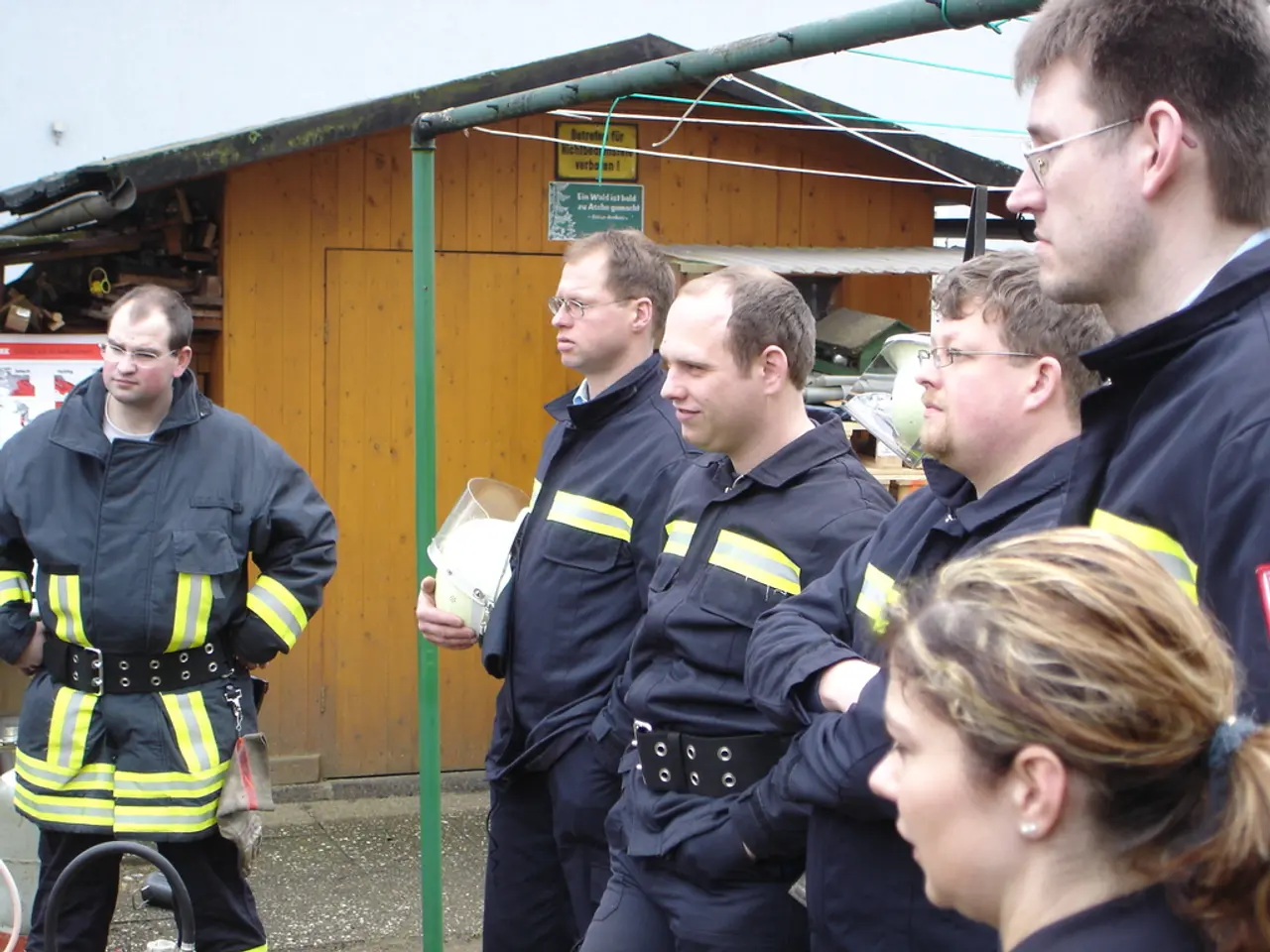Fire Resistance of Mass Timber: An Analysis of Empirical Data
In the world of modern construction, mass timber is making a significant impact. This innovative building material is not only lighter and faster to assemble, but it also offers a climate advantage by storing carbon drawn down from the atmosphere.
Full-scale compartment burns have demonstrated that timber buildings can withstand controlled fires without collapse, thanks to their unique fire behaviour. Unlike steel, which loses strength when it reaches about 600°C and can deform or buckle quickly, or concrete, which while noncombustible, can spall and expose reinforcing steel, mass timber's failure mode is gradual. Thick timber members form a char layer that insulates and slows heat spread.
The safety concerns surrounding mass timber have been a topic of discussion for investors, insurers, and regulators. However, recent advancements in design strategies, fire service tactics, and construction practices are helping to alleviate these concerns. Design strategies include the use of sprinklers, encapsulation with gypsum board, fire-rated detailing, and limits on exposed timber surface. Engaging a fire engineer and the authority having jurisdiction early in the design process can prevent delays and redesigns later.
Building codes have introduced new construction types specifically for tall timber, allowing buildings up to 18 stories with varying degrees of required encapsulation and allowable exposure. Adding layers of drywall or a water mist system slightly increases construction cost, but can reduce insurance premiums and smooth approvals.
Insurance underwriters have been conservative regarding timber buildings due to a lack of actuarial data, but this is beginning to change as more data emerges. Creating a national database of fire incidents and test results would reduce uncertainty faster.
Canada, with major manufacturers like Nordic Structures based in Chibougamau, Quebec, has an opportunity to lead in mass timber safety by harmonising with U.S. provisions, funding more full-scale tests, and requiring construction phase fire plans. Connection performance, especially in innovative seismic designs, requires more fire testing.
One of the key factors in the successful implementation of mass timber is the careful planning and execution of fire controls during construction. Bringing a fire engineer in early, deciding on how much wood to expose, planning encapsulation accordingly, talking with building officials and insurers before finalising designs, implementing strong fire controls during construction, and having a plan for assessing and repairing any fire damage if it occurs reduces risk and builds confidence.
Repair of charred timber and assessment of residual capacity after a fire is another open question with big implications for insurers and owners. Designers can size members with this sacrificial layer in mind, leaving enough intact wood to carry loads for the required fire rating period. Mass timber elements routinely achieve 1 or 2 hour ratings in fire tests and in some cases much longer, meeting or exceeding performance standards.
The combination of these factors is considered powerful for developers and policymakers trying to hit cost and emissions targets. By investing marginally more in fire protection, they can avoid financing costs and ensure faster project delivery.
In conclusion, mass timber is a promising material for the future of construction. With continued research, development, and adoption of best practices, it has the potential to revolutionise the industry while addressing environmental concerns.
Read also:
- Understanding Hemorrhagic Gastroenteritis: Key Facts
- Stopping Osteoporosis Treatment: Timeline Considerations
- Tobacco industry's suggested changes on a legislative modification are disregarded by health journalists
- Expanded Community Health Involvement by CK Birla Hospitals, Jaipur, Maintained Through Consistent Outreach Programs Across Rajasthan








